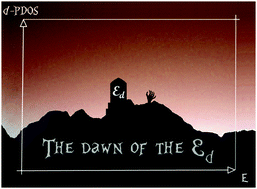Robustness of surface activity electronic structure-based descriptors of transition metals†
Abstract
Efficient yet simple electronic structure-based descriptors of transition metal surfaces are key in material design for many scientific fields in research and technology. Density functional theory-based methods provide the framework to systematically explore the performance and transferability of such descriptors. Using appropriate surface models and the Vosko–Wilk–Nussair (VWN), Perdew–Burke–Ernzerhof (PBE), PBE adapted for solids (PBEsol), revised PBE (RPBE), and Tao–Perdew–Staroverov–Scuseria (TPSS) exchange–correlation functionals, we study the transferability of three descriptors: the d-band centre, the width-corrected d-band centre, and the Hilbert transform highest peak, among the low-index Miller surfaces for the metals of transition elements. We show that the d-band centre and the width-corrected d-band centre descriptors are almost independent of the functional used whereas a dependency is seen in the Hilbert transform highest peak. Moreover, it is seen that the differences between the surface descriptor values and predictions from the bulk ones are affected by the presence of surface states. Interestingly, a direct relation between the surface coordination number and the d-band centre electronic descriptor is found when surface states are absent.



 Please wait while we load your content...
Please wait while we load your content...